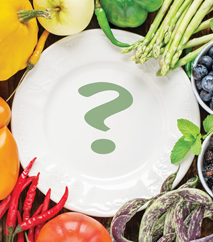Sustainability: Waste Not, Want Not
On the flip side of attractiveness, Taylor says sustainability is still a factor for many people including more eco-friendly packaging and marketing of “wonky” or “ugly” produce with no internal problems, only outward blemishes or sizing. Caplan predicted wider acceptance of these edible oddities in our feature last year and a number of prominent supermarket chains are no longer rejecting misshapen or ugly produce, offering these items in special displays, some with significantly lower price points.
“No disease, no scarring, but they’re misshaped,” points out Taylor. “Growers and shippers are really embracing the thought that American households don’t want to be wasteful. As an industry, we’re sustainably minded—if you’re not a sustainable player, you’re simply not in the game anymore.”
Totta predicts more movement toward proprietary seeds and special product varieties grown in the buy-local movement, particularly as it relates to the hydroponic greenhouse industry, along with an increased use of LED lighting to grow without sunlight in warehouses. “There are so many ‘niche’ things going on in our industry. Eight years ago, had you ever heard of a mini sweet pepper? Now people are buying them in big bags and using them as snacks. These are the types of things I think we’ll see more of.”
Just One Word?
So if our contributors had to sum up or describe the produce industry in 2016 in just one word, what would it be? Caplan chose “channels,” as in new venues and ways to sell food and value-added products to consumers. “Think Aldi, Lidl, Kroger, Walmart, delivery service like Fresh Direct, and meal kits like Blue Apron.”
For Jerry Butt, president and CEO of Glendale, CA-based recruiter Mixtec Group, the word is “globalization” and our increasingly small world. “Trade agreements, consumers demanding wider and healthier selections, seasonality, costs, emerging economies, and greater world food demand are rapidly erasing all boundaries.”
For those at the helm of today’s produce suppliers, it’s imperative to have a global perspective. “Doing business outside the United States to satisfy expansion of American companies is a priority,” Butt says. “Additionally, growers from all over the world are rushing to sell in the United States, and imports are on the rise. Global-savvy leaders are in high demand as the international fresh produce marketplace continues to grow and thrive.”
CHANGE IS THE ONLY CONSTANT
It’s impossible to know what the future will bring, but our experts see more positives than negatives for 2016. Of course, a few of the negatives—ongoing drought, labor shortages, food safety, and various regulations—have the potential to significantly and negatively affect the produce and greater food industries.



